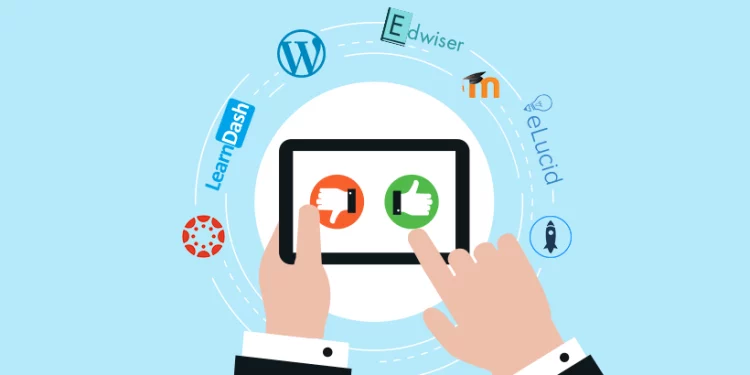Introduction
In the rapidly evolving landscape of online education, having a robust Learning Management System (LMS) is essential for delivering engaging and effective learning experiences. Among the myriad options available, WordPress LMS stands out as a versatile and powerful platform for creating and managing online courses. In this extensive manual, we’ll explore the realm of WordPress LMS, exploring its features, benefits, installation process, optimization tips, integration possibilities, and more.
Understanding WordPress LMS
What is WordPress LMS?
WordPress LMS, short for Learning Management System, is a plugin designed to transform your WordPress website into a dynamic online learning platform. It provides educators, trainers, and organizations with the tools they need to create, manage, and deliver courses to a global audience.
Exploring the Benefits
Why Choose WordPress LMS?
There are several compelling reasons to choose WordPress LMS for your online learning needs. Firstly, it offers unparalleled flexibility and customization options, allowing you to tailor your learning environment to meet the unique needs of your audience. Additionally, WordPress LMS boasts a user-friendly interface, making it accessible to both instructors and learners. Moreover, it integrates seamlessly with your existing WordPress site, enabling you to maintain brand consistency and leverage existing resources.
Unraveling the Features
Key Features of WordPress LMS
WordPress LMS comes equipped with a range of features designed to enhance the online learning experience. Some of the key features include:
User-Friendly Interface
The intuitive interface of WordPress LMS makes it easy for instructors to create and manage courses, and for students to navigate and engage with course content.
Customization Options
From course layouts to branding elements, WordPress LMS offers extensive customization options, allowing you to create a unique and engaging learning environment.
Assessment Tools
WordPress LMS provides built-in assessment tools, such as quizzes and assignments, to evaluate student progress and comprehension.
Student Progress Tracking
Instructors can easily track student progress and performance through comprehensive reporting and analytics features.
Setting Up WordPress LMS
Step-by-Step Guide to Installation
Setting up WordPress LMS is a straightforward process. Follow these steps to get started:
Installing the Plugin
Begin by installing the WordPress LMS plugin from the WordPress repository or a third-party provider.
Configuring Settings
Once installed, configure the plugin settings according to your preferences, including course settings, payment options, and user permissions.
Creating Courses
With WordPress LMS installed and configured, you can begin creating courses by adding content, setting enrollment parameters, and organizing course materials.
Enhancing User Experience
Tips for Optimizing WordPress LMS
To maximize the effectiveness of your online courses, consider the following tips for optimizing WordPress LMS:
Choosing the Right Theme
Select a WordPress theme that is compatible with WordPress LMS and enhances the overall learning experience.
Incorporating Multimedia
Enrich course content with multimedia elements such as videos, audio clips, and interactive presentations to engage learners and reinforce key concepts.
Utilizing Interactive Elements
Integrate interactive elements such as quizzes, polls, and discussion forums to encourage active participation and collaboration among students.
Providing Support Resources
Offer comprehensive support resources, including tutorials, FAQs, and help documentation, to assist students throughout their learning journey.
Integrating with Other Plugins
Maximizing Functionality
WordPress LMS seamlessly integrates with a variety of third-party plugins, extending its functionality and enhancing the learning experience. Some commonly sought-after integration possibilities encompass:
Seamless Integration with WooCommerce
Integrate WordPress LMS with WooCommerce to monetize your courses and sell digital products and services directly from your website.
Harmony with Membership Plugins
Combine WordPress LMS with membership plugins to create subscription-based access to courses and premium content.
Enhancing Communication with LMS Add-ons
Utilize LMS add-ons to enhance communication and collaboration features, such as live chat, messaging, and webinar integration.
Ensuring Security and Compliance
Best Practices for Data Protection
Maintaining the security and privacy of student data is paramount when operating an online learning platform. Follow these best practices to ensure data protection:
Implementing Secure Payment Gateways
Utilize secure payment gateways to process transactions securely and protect sensitive financial information.
Following GDPR Guidelines
Adhere to GDPR guidelines and regulations regarding the collection, storage, and processing of personal data to maintain compliance and protect student privacy.
Regular Updates and Maintenance
Stay up-to-date with the latest security patches and updates for WordPress LMS to mitigate vulnerabilities and ensure the integrity of your online learning platform.
Conclusion
Empower Your Online Learning Experience with WordPress LMS
WordPress LMS offers a wealth of features and benefits for creating engaging and effective online courses. By following the steps outlined in this guide, you can unlock the full potential of WordPress LMS and create dynamic and interactive learning experiences that inspire and engage your audience.


